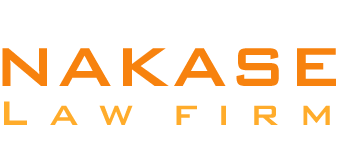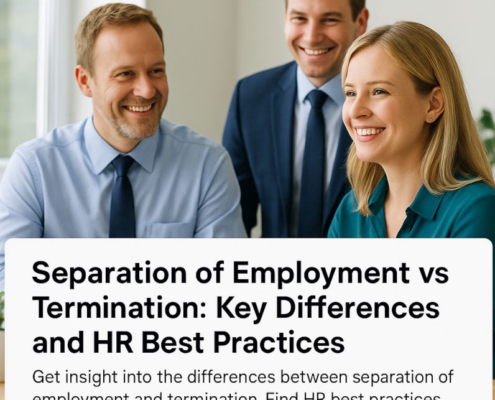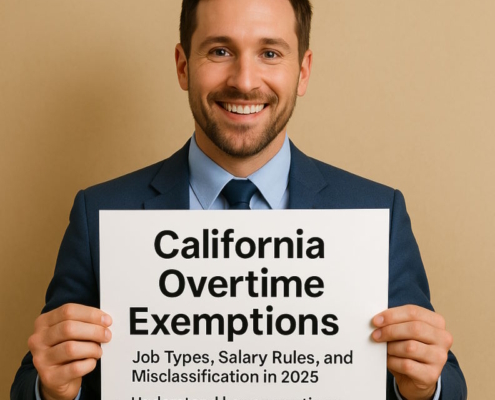Introduction
Target is a famous business that has over 1,900 outlets in the US, Canada, and India. The human resources department is very crucial in attracting, developing, and retaining talent within Target, which employs more than 350,000 people. This article explores the Target policies for employees and describes the strategies, guidelines, and procedures that the organization applies in order to attain success.
Human Resources Recruitment Techniques
Target employs a data-based recruitment strategy to attract the best candidates who possess the company’s culture and values. Target ranks successfully on Glassdoor (4.3 star rating based on employee reviews), which proves their successful hiring behavior. This is shown by the fact that the company on average receives 4.5 million applications to work in the company every year, which shows that it is a workplace of choice.
Target uses both innovative methods and traditional methods of recruiting employees with the aim of identifying and attracting the best talent. Target is able to identify the qualities and abilities that lead to hires by utilizing data analytics & predictive modeling techniques.
Target has made an investment to develop a company image that appeals to prospective employees. In reference to the Global Talent Trends study of LinkedIn, businesses adopting employer branding reduced the cost per recruit by half. Target policies for employees include an employer branding strategy. It makes the company a desirable location to work as a leading professional because of the focus on the organization’s core values, work ethos, and dedication to inclusivity and diversity.
Target Training and Onboarding for Human Resources
At the core of Target’s policies for employees is its steadfast attention to staff training and development efforts. The National Retail Federation reports that in 2023, US businesses spent a mean of $1,207 on education and training programs for each employee. Target goes above and beyond by making large investments to equip its employees with the knowledge and abilities needed to succeed and advance within the organization. Target helps its workers with onboarding and training in the following ways:
- Effective procedures for onboarding
Target Human Resources incorporates new hires into the organization’s values and culture through its onboarding program. Organizations that have structured onboarding programs retain 58 percent of new hires. In an effort to facilitate new employees during their time in the company, Target provides interactive training, work shadowing, and mentorship as part of onboarding.
- A focus on development and training
The Target HR department highly emphasizes lifelong learning and development. The recent surveys have shown that 76% of employees want the opportunity to develop and advance professionally, which will increase the rate of employee satisfaction and reduce turnover. Target offers a broad scope of training programs to help its employees grow in terms of skills and knowledge, as well as develop as leaders and gain cross-functional experiences.
Target Human Resources Practices and Policies
1. Diversity and Inclusion efforts
A McKinsey Report found that a company with a gender diverse top management is 35% more likely to outperform its competitors. Target incorporates diversity and inclusion into its core HR responsibilities. It acknowledges their importance. Target has developed recruitment initiatives centered on underrepresented communities, resource groups for workers, and training on unconscious bias while striving for a greater degree of diversity & inclusion.
The Target policies for employees are designed to acknowledge and value each employee’s individuality as well as the benefits of workplace commonality. Target is attempting to maintain equity & representation, as evidenced by its ranking among the best firms for inclusion and diversity in a Fair360 report.
The company’s ethical business responsibility is diversity hiring, which involves forming active partnerships with organizations and institutions to find qualified candidates from underrepresented communities and develop a diverse applicant pool for a range of positions within the corporation. Target is a leader in this area because of its employee resource groups. They promote inclusion throughout the company and give staff members a forum to network, express their views, and develop projects that advance equity & diversity.
Target uses its influence to support marginalized groups in the community and is a driver of external diversity in addition to its internal initiatives. As a result of supplier diversity programs, partnerships with minority-owned firms, and charity work directed at eliminating the challenges affecting disadvantaged communities, the corporation is committed to social change.
2. Pay and Benefits
Target Corporation is aware that inclusive benefits and competitive compensation packages have a significant impact on how people view jobs generally and how likely they are to stick with them. Target policies for employees incorporate it fully. Consequently, the company has a competitive remuneration package that aims at harmonizing the interests of the workers and increasing their job satisfaction. Besides this, it promotes a performance and accountability culture.
The three primary tenets of Target’s compensation system are equality, openness, and outperforming the competition. In an effort to maintain competitive hourly rates and compensation in the retail sector and in the areas where the company operates, the company conducts benchmarking studies. Employees are therefore encouraged to get merit-based promotions, cash incentives, and other incentive programs through Target’s performance-based pay structure.
Target offers numerous benefits to support employees’ well-being. These perks include paid time off, retirement, fitness initiatives, full medical insurance, and special prices on Target goods.
Engagement & Retention of Employees
Target funds its staff retention and staff engagement efforts with the following strategies:
- The establishment of a positive working culture
A positive corporate culture has been known to influence employee engagement, their level of satisfaction at work, and even their productivity. Innovation, collaboration, and diversity are the three keywords of the Target corporate culture. The enhancement of culture in Target is achieved by regular employee surveys, recognition programs, and employee input programs.
- Programs for employee recognition
Companies that implement employee appreciation/appraisal initiatives see a 31% decrease in staff turnover. The purpose of Target’s recognition schemes for workers is to recognize and honor employees for their accomplishments for the company. The initiatives include performance-based rewards, peer-to-peer honors, and service awards.
- Strategies to reduce turnover
Employee turnover can greatly affect the earnings of the company, and it costs an average of 1.5- 2 times the annual salary of an employee. Target has employed various measures to curb the rate of employee turnover, including providing employees with opportunities to grow and develop their careers, high remuneration, and benefits.
Aspects of Law and Compliance
Target’s human resources department is responsible for ensuring compliance with all relevant laws and work standards. Target’s HR function depends on the following compliance and legal considerations:
1. Rules and laws concerning employment
The human resources department at Target is mandated with the responsibility of ensuring that labor laws and regulations are observed (locally, state, & federally). This contains the rules that concern harassment, discrimination, and workplace safety. Firms that default on the labor rules and regulations attract hefty fines and damage their image.
Target is a huge organization that has been functioning in various jurisdictions, and this means that the organization is at risk of being subjected to a complex environment of labor laws and regulations. There is a need to maintain adherence to the varying legal norms, such as the laws of minimum wages and the safety and security provisions in the workplace, to ensure that the conformance risks are reduced to a minimum and that the firm maintains a favorable image.
Target has a strong legal and compliance department, which is charged with the responsibility of monitoring developments in the labor legislation, measuring the regulatory demands, and ensuring that HR policies of the company remain within the parameters of the law. The company also undertakes constant investment in training and development of HR professionals and front-line supervisors in an attempt to equip them with the knowledge and skills required to manage legal complications and maintain ethical practices at work.
In a bid to transform its human rights impact assessment (HRIA) to its processes, supply chain, and business partnerships, Target collaborated with Article One, a firm specializing in that area, as well as a human rights consultant. Maintaining secure working conditions while upholding fair labor practices, respecting each employee’s civil rights, and expanding ongoing renovation & employee health programs are the main risk areas that the HRIA recognized as being suitable for Target.
2. Drug tests and background checks
All new personnel must undergo background checks and drug tests, which are handled by Target’s HR department. Employers who use drug tests and background checks report a 20% decrease in employee attrition. Target’s drug tests and background checks are designed to ensure the safety and security of its employees and customers. Rap sheet searches are part of the background check, and they may vary slightly based on the role and area.
Important Human Resources Leaders
Target’s HR department is run by a team of seasoned and successful human resources professionals. Melissa Kremer, senior vice president & chief human resources strategist of Target Corporation, is one of the company’s main HR leaders. She oversees all aspects of human resources for Target’s global workforce of more than 400,000 employees. She oversees the recruitment and training, ethical business practice, responsible corporate citizenship, the environment, and major contributions to the community.
She is not afraid of making choices and introducing innovations in HR management; she is digitally and data-oriented, and believes in the human-centered design.
Target’s Human Resources Technology
Target Corporation improves and enhances its human resources procedures by utilizing advanced HR information technologies. HR Software is used by them for:
- Managing employee data,
- Assisting with payroll,
- Disbursing benefits, and
- Performance indicators monitoring.
The company has empowered the use of data in making decisions, reducing the amount of work done by managers, and enhancing functional performance.
The HR management system adopted by Target is a simple system that has self-service capabilities that encourage employees to update their details, subscribe to benefits, and access HR resources. The system also includes innovative analytics features providing the ability to understand the workforce trends along with the possibility to address the opportunities for development, risk mitigation, and make informed strategic decisions by the professionals of the HR department.
Artificial Intelligence and Robotization in Human Resource Processes
Target Corporation is one of the companies that embraces automation and artificial technologies in the effort to streamline its HR-related processes and render them efficient. The use of chatbots and predictive analytics based on artificial intelligence has significantly eased the performance review process, onboarding, and candidate screening, which are the most common routine matters of the HR professional, thus enabling them to spend time on strategic tasks.
Using algorithms powered by AI to evaluate candidate resumes and predict work appropriateness based on crucial needs like abilities, experience, & cultural fit is one impressive example of automating in Target’s HR processes. They have reduced bias and boosted time-to-hire by automating the initial testing process.
Furthermore, Target operates AI-based analytics to improve the analysis of workplace dynamics, identify trends, and prepare in advance regarding talent needs. They have applied data to lead to continuous innovation and progress in the organization, such as dealing with problems like attrition and skills shortage.
Conclusion
Human resources is significant in determining the capacity of a company to sustain its competitive edge in the retail industry and facilitate employee participation. Target policies for employees will be committed to devoting its greatest asset, which is people, both in hiring and talent management, as well as in diversity and inclusion programs.
The creative HR practices, policies, and effective leadership allow Target to embrace an inclusive and equitable work environment. The focus on staff development and well-being shows that Target takes the time to promote the creation of an environment under which employees can thrive and advance the continued prosperity of the company.































